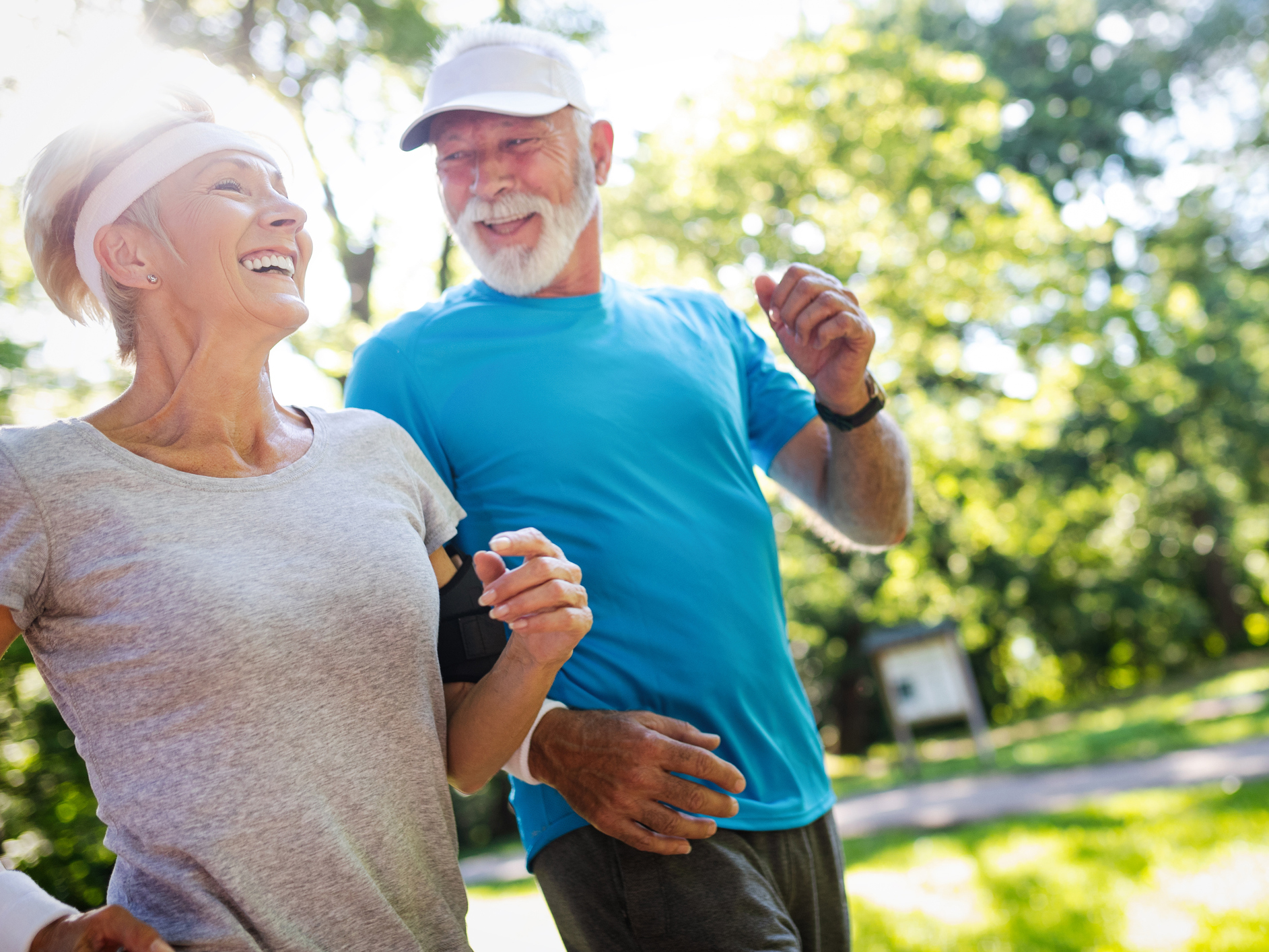Get Easy Health Digest™ in your inbox and don’t miss a thing when you subscribe today. Plus, get the free bonus report, Mother Nature’s Tips, Tricks and Remedies for Cholesterol, Blood Pressure & Blood Sugar as my way of saying welcome to the community!
Change up your exercise intensity to change your brain, your mood and your life

We all know that getting regular exercise is one of the best things we can do for our health. It lowers the risk of numerous conditions from heart disease and high blood pressure to diabetes and even cancer.
In fact, just maintaining a routine of physical activity has been shown to reduce your chances of dying by up to 45 percent!
But, how does it work if you’re doing the same old exercise routine on a daily basis? Do you still get every benefit physical activity has to offer or is there more to getting the most from exercise?
A variation in high and low-intensity exercise
Well, according to a new study, while just getting regular exercise could be enough to help you live longer and healthier, you could get even more if you switch things up a bit.
The research team, out of University Hospital Bonn, in Bonn, Germany, was the first to ever look at the distinct effects varying exercise intensities can have on the specific functional networks in your brain even at rest.
The recruited male athletes who were willing to participate in an incremental treadmill test. One day they performed low-intensity exercise for 30 minutes, while on the next, they kicked it up a notch for some high-intensity activity for the same amount of time.
The team analyzed the connectivity in their brains both before and after exercise using MRI to see if the different intensities changed how the neurological processes worked and had participants rate their mood after each exercise.
And, here’s what they found…
While both high- and low-intensity exercise had the power to boost mood, the variations in intensity produced big changes in the brain’s connectivity.
Low-intensity exercise led to better connectivity for cognitive processing (your ability to think through problems) as well as attention.
On the other hand, high-intensity exercise was better for the brain networks needed to process emotions.
Yup, all exercise is not created equal.
And, if you want to get specific benefits, you need to change up the intensity of your physical activity in order to achieve them.
High versus low
So, if you’re experiencing issues with depression, anxiety, or other emotional issues, you might want to skip the after-dinner walk you had planned and instead focus on a high-intensity activity. Good options include:
- Jumping rope
- Going for a run
- Using cardio machines
- Cross country skiing
According to the Mayo Clinic, high intensity or vigorous activity should make you sweat after only a few minutes, leave you breathing deep and rapidly, and make it difficult to say more than a few words without stopping to catch your breath.
Related: The 3-minute HIIT that shapes you up
On the other hand, if you’re looking for a boost for your attention or cognitive processing, low-intensity exercise might be the way to go.
Examples of this type of workout include going for a light walk, doing yoga, swimming, or even just catching up on your household chores.
If your chosen activity doesn’t change your breathing pattern or cause you to sweat, and you find that you can even carry on a conversation while doing it, it’s a good bet that it’s a low-intensity workout.
Even better, you can try varying your workouts — some days low intensity and other days higher — in order to get the benefits of each. You could end up grabbing the disease protection as well as better attention, focus, and cognition, along with improved emotional processing… A win, win, win.
Editor’s note: Everyone ages differently — and exercise isn’t always an option for everyone. What else is? How you live, love and eat, for starters. Lifestyle factors are driving disease down and they can also help you maintain a vibrant brain with age. For a preview of Nature’s Secrets for an Active, Healthy Mind at Any Age, click here!
Sources:
- High and low exercise intensity found to influence brain function differently — EurekAlert
- Exercise and Heart Disease: 10 Ways Exercise Can Reduce Your Risk — American Council on Exercise
- Exercise linked to lower risk of 7 cancers, study finds — NBC News
- Exercise linked to 45 percent drop in death risk — United Press International
- Exercise intensity: How to measure it — Mayo Clinic
- What Kinds of Exercises Are Considered Low-Intensity? — Livestrong













